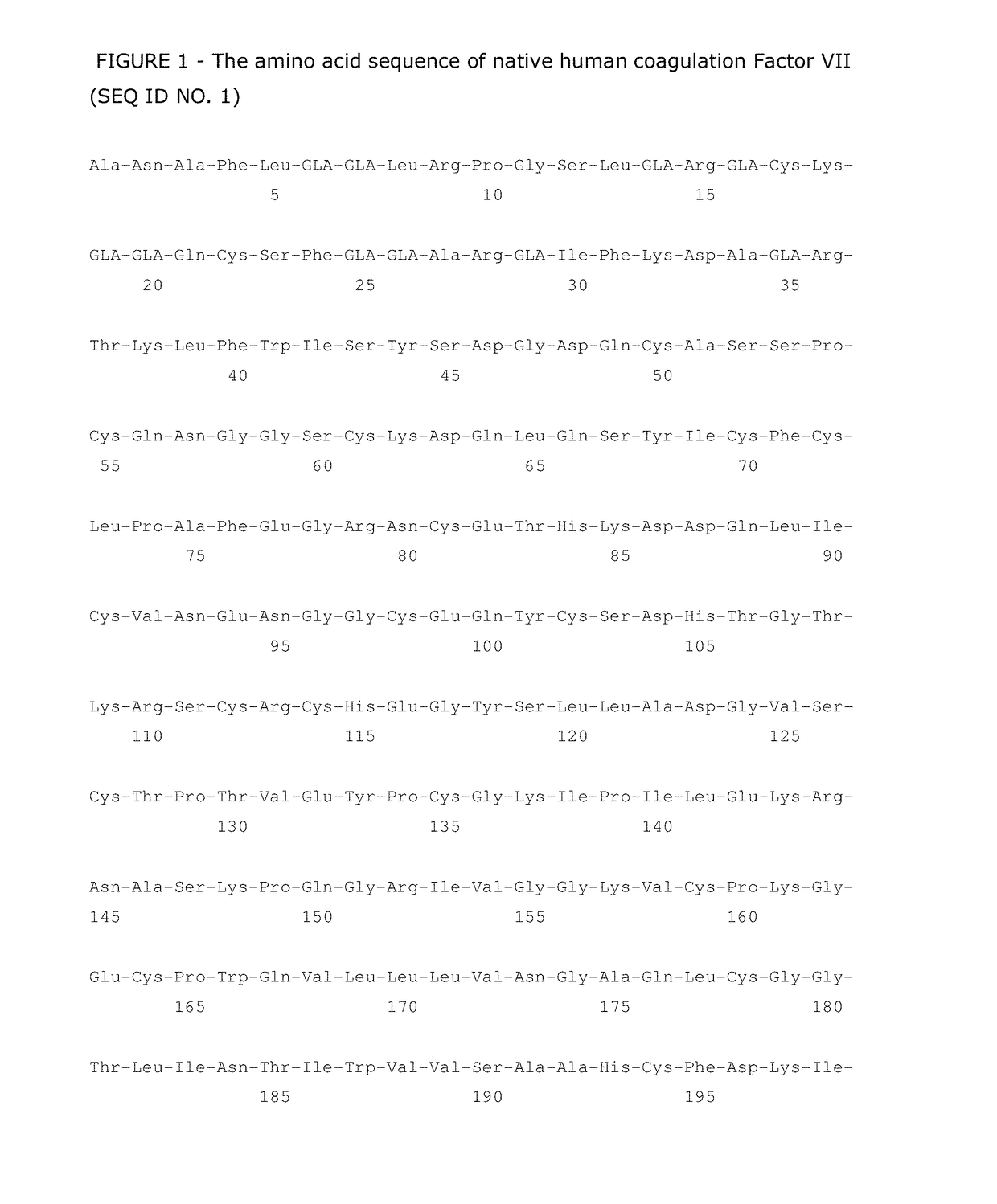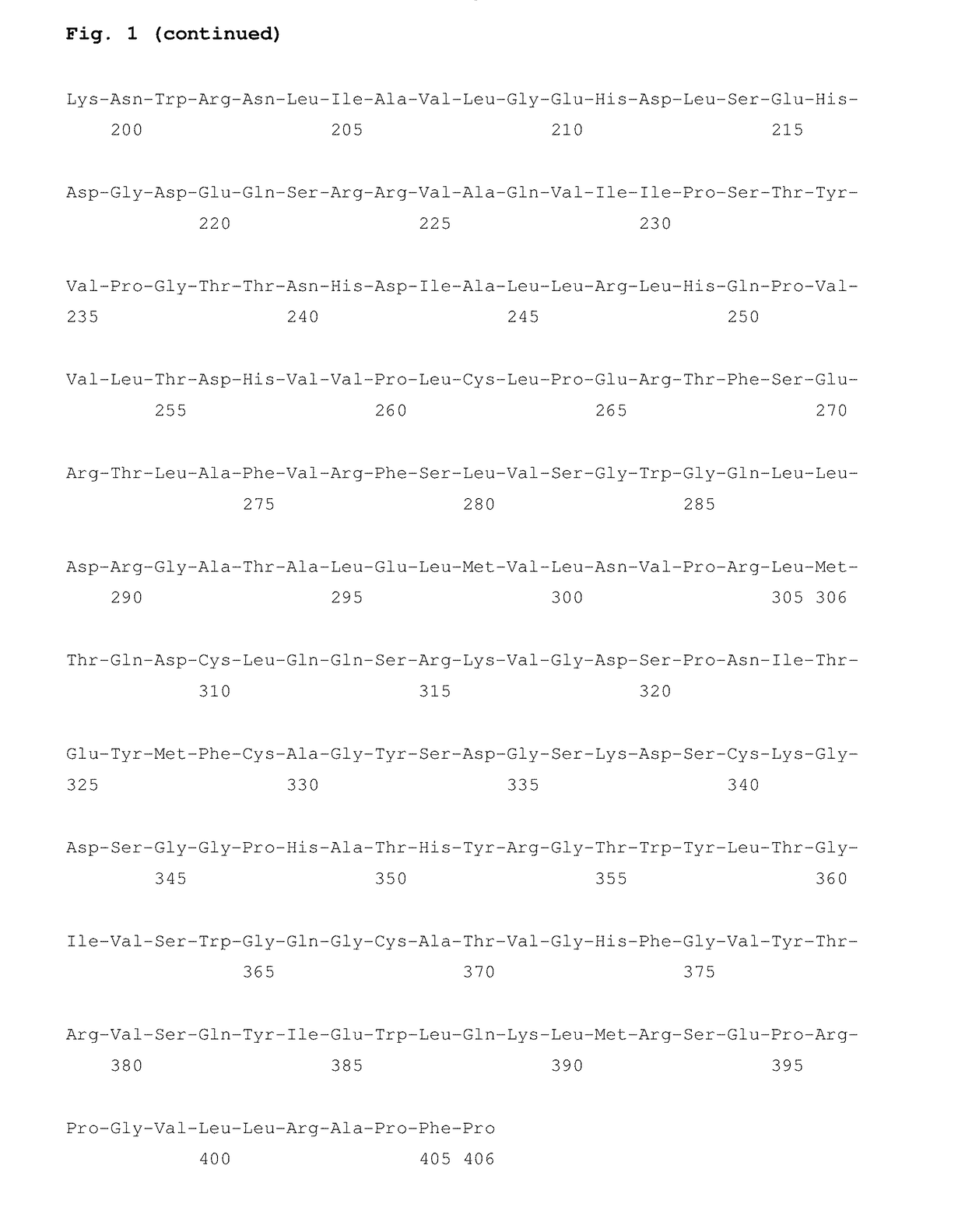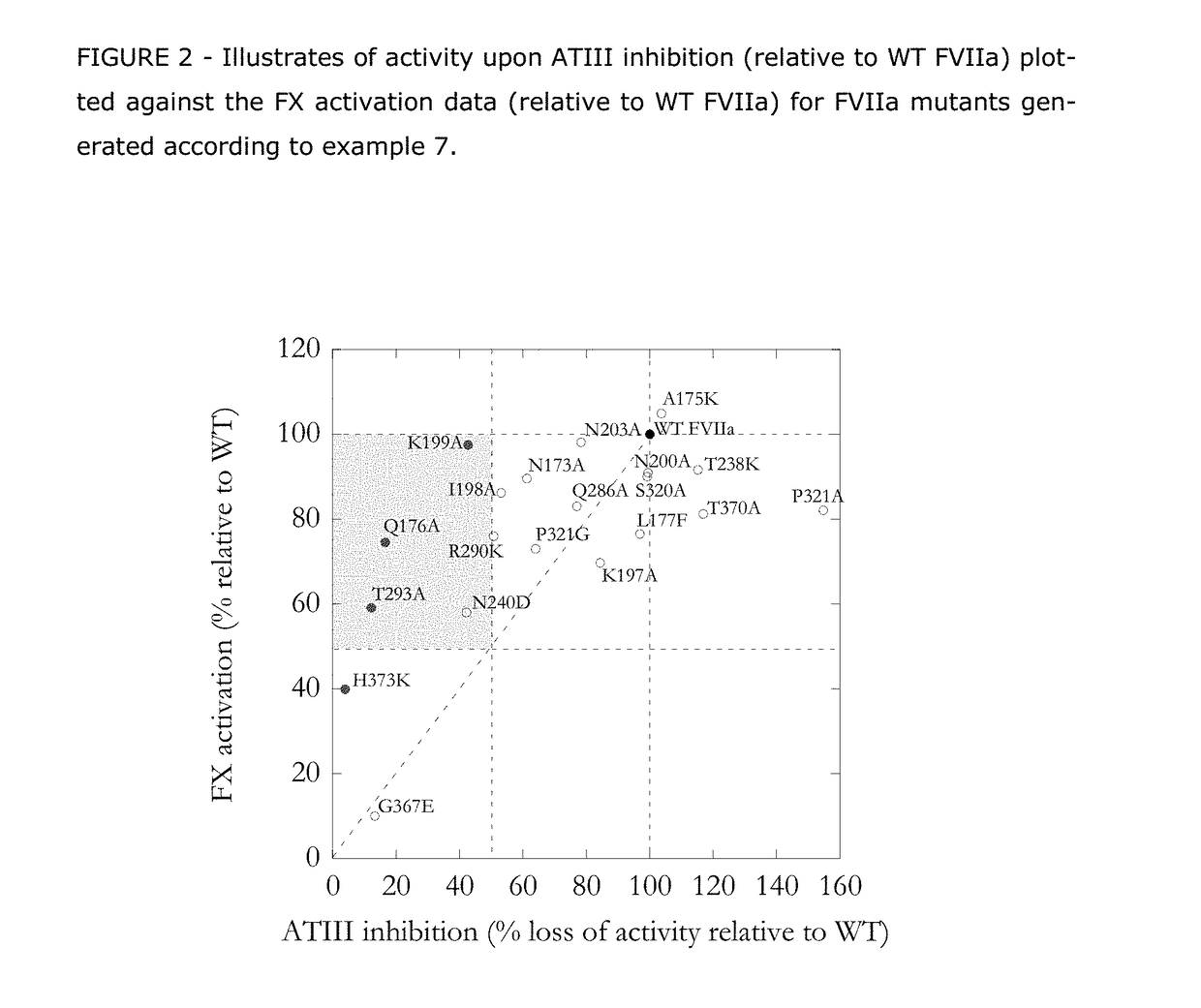Human Coagulation Factor VII Polypeptides
a human coagulation factor and polypeptide technology, applied in the field of new drugs, can solve the problems of fibrin clot formation and bleeding, and achieve the effect of reducing bleeding and improving coagulation activity
- Summary
- Abstract
- Description
- Claims
- Application Information
AI Technical Summary
Benefits of technology
Problems solved by technology
Method used
Image
Examples
example 1
Site-Directed Mutagenesis:
[0343]In the following, both FVIIa numbering and chymotrypsin numbering may be used. The chymotrypsin numbering is written in parentheses after the FVIIa numbering and is marked with c and the residue number, e.g. Asp289 (c146). Residues important in the substrate specificity of FVIIa were identified by site-directed mutagenesis.
[0344]Mutations were introduced in the FVII gene using QuikChange® II Site-Directed Mutagenesis Kit (Stratagene) according to the manufacturers' recommendations. Briefly, PCR-reactions contained 25 ng of plasmid pLN174, 10 pmol of each mutagenic oligonucleotide primer, 5 μl of 10× reaction buffer, 1 μl of dNTP mix, and 1 μl of PfuUltra High-Fidelity DNA polymerase (2.5 U / μl) in a total volume of 50 μl. The PCR conditions consisted of 30 seconds of heating at 95° C. followed by 18 cycles consisting of 30 seconds at 95° C., an annealing step for 1 minute at 55° C. and an extension step for 7 minutes at 68° C. Following amplification, ...
example 2
Mammalian Expression of FVII Mutants:
[0345]Baby Hamster Kidney cells (BHK) were transfected with 1.5 μg DNA of each mutant FVII expression plasmid. 5·106 BHK-cells were seeded in a T175 Nunc Easy Flask with culture medium (Dubeccos Modified Eagles medium (DMEM) with glutamax-1 from Gibco (containing sodium pyruvate, pyridoxine and 4500 g / L glucose), 10% Fetal Bovine Serum (FBS) and 1% penicillin and streptomycin). After three days of incubation in the CO2-incubator, the cells were trypsinated and 0.5·106 cells per T25 Nunc Easy Flask were seeded in 5 ml of culture medium.
[0346]The FVII mutants were transfected using the FuGene™ 6 Transfection Reagent from Roche. 155 μl of DMEM was mixed with 3 μl of FuGene6 Transfection Reagent in a small cryo tube and incubated for 5 minutes at room temperature. 1.5 μg DNA of each mutant was pipetted into a new cryo tube and the DMEM-FuGene6 transfection mix was added drop wise to the DNA. After 15 minutes of incubation at room temperature the FuGe...
example 3
Purification of FVII Mutants:
[0348]The FVII mutants were purified by a two-step procedure using an ÄKTA Explorer from Amersham Biosciences:[0349]1. Ion exchange chromatography using a Q-Sepharose Fast Flow column (anion exchanger) ˜50 ml (Amersham Biosciences)[0350]2. Affinity chromatography using a F1A2 Sepharose 4B anti-FVII Antibody Column ˜10 ml.
[0351]The five harvested supernatants from each mutant were pooled and adjusted to pH 8 and a final concentration of 10 mM Tris and 5 mM EDTA. The conductivity was adjusted to λ=11.6 mS / cm with deionised water. The supernatants were applied to the Q-Sepharose Fast Flow column equilibrated with 10 mM Tris, 50 mM NaCl pH 8.0. FVII has an isoelectric point of 7 at pH=8 allowing FVII to bind to the Q-Sepharose column. After washing with equilibration buffer until baseline was low, the proteins were eluted with a linear gradient with 10 mM Tris, 50 mM NaCl, 25 mM CaCl2 pH 8.0. The top fractions were pooled and adjusted to pH 7.5 and applied t...
PUM
 Login to View More
Login to View More Abstract
Description
Claims
Application Information
 Login to View More
Login to View More - R&D
- Intellectual Property
- Life Sciences
- Materials
- Tech Scout
- Unparalleled Data Quality
- Higher Quality Content
- 60% Fewer Hallucinations
Browse by: Latest US Patents, China's latest patents, Technical Efficacy Thesaurus, Application Domain, Technology Topic, Popular Technical Reports.
© 2025 PatSnap. All rights reserved.Legal|Privacy policy|Modern Slavery Act Transparency Statement|Sitemap|About US| Contact US: help@patsnap.com



